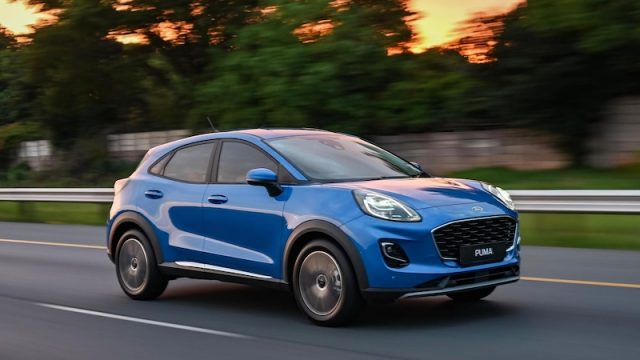The Ford Puma 1.0T Titanium has entered the South African market as a stylish, compact SUV that successfully blends sexy sheet metal, practicality, and a fun-to-drive nature.
So, the Puma has that and more going for it, but it lands in hostile territory, where almost every other carmaker offers an alternative. The battle for even a sliver of market share is fierce. Will the Puma survive South Africa, or become extinct? Let’s consider its strengths and weaknesses.
Looks sell, and the Ford Puma is a head-turner, thanks to its sleek lines and evocative curves. Its sporty stance is enhanced by the sloping roofline, giving it a dynamic, coupe-like appearance. In a world of SUV/cross-over sameness, the Puma offers a unique and exciting design.
Interior and comfort
Step inside the Titanium Puma, and you’ll be greeted by a cabin that’s spacious for a compact SUV, with supportive and comfortable seats wrapped in cloth materials. The driver’s elbow rest, which is nice and soft, is also covered in fabric. Synthetic leather would have been a more practical choice here, as these surfaces can become quite dirty.
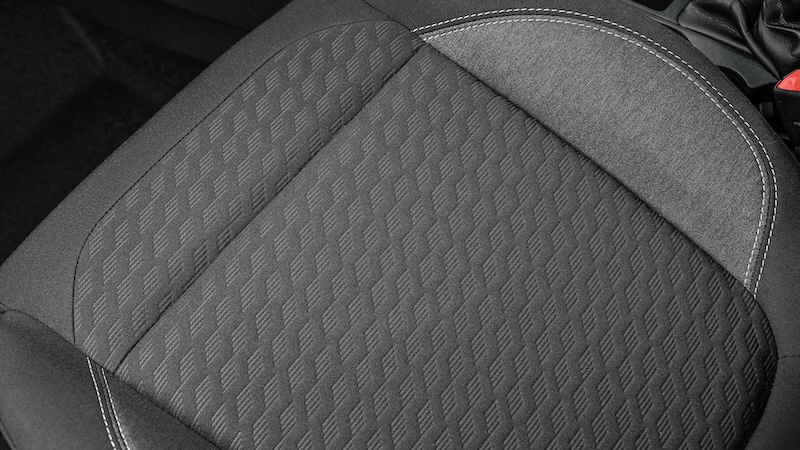
The Titanium trim level brings in a host of features, including a leather-wrapped steering wheel, keyless entry, and automatic air-conditioning. These are its main features:
Main features
- 17” 10-spoke alloy wheels with “Absolute Black Machined” finish
- 8” Colour touch screen
- Power-foldable heated door mirrors with puddle lamps
- Wireless smartphone charging
- Auto headlamps and high beam
- Body-coloured rear spoiler
- Start button
- Selectable drive modes – Normal, Eco, Sport, Slippery, and Trail
- 6-speaker sound system
- Ford SYNC 3 with Apple CarPlay & Android Auto
The 8” touchscreen infotainment system, equipped with Ford’s SYNC 3, offers wireless connectivity with Apple CarPlay and Android Auto. The system is intuitive and responsive, making it easy to control music, navigation, and smartphone functions.
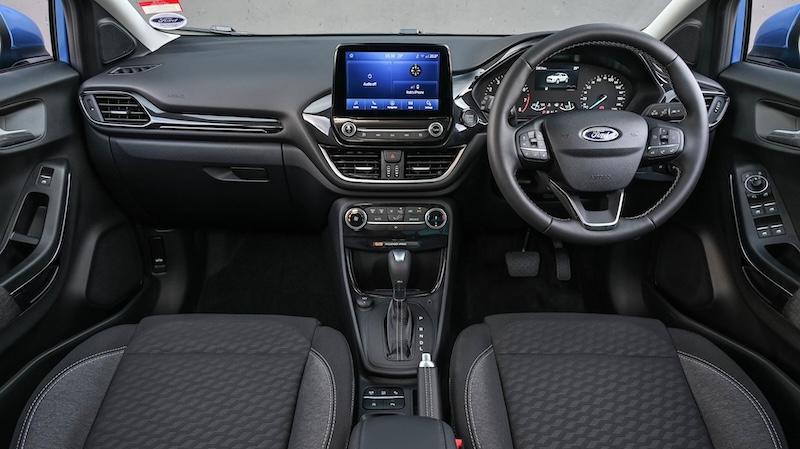
Viva old-school buttons
A highlight of the Puma’s interior design is the great number of ‘hard’ buttons for controlling the infotainment system. This makes diving into the menu unnecessary, for example when changing the cabin air-flow from fresh to recirculated. This is not just a convenience matter, but one of safety too.
I also like the button that turns the screen on or off; useful when driving long distances at night.
Like many of the latest cars, the Puma has different driving modes. They are: Normal, Eco, Sport, Slippery and Trail. There’s a button that toggles between these modes, but its location is awkward. It sits low and to the left of the handbrake. The button for the hazard lights is on the small side too, but you’d get used to its location.
For those who value luggage space and practicality, the Puma boasts a versatile boot, with Ford’s innovative “MegaBox” storage solution providing additional underfloor storage for extra luggage or sports gear. Hats off to the designers who came up with this ingenious feature; I wish all cars had it!
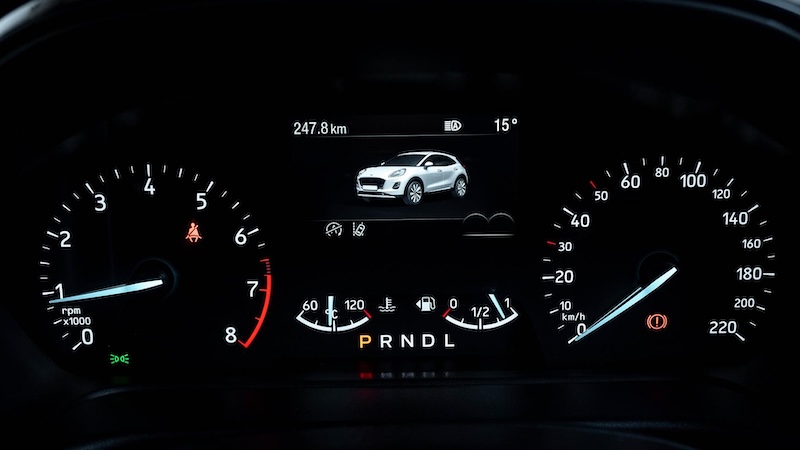
Performance and efficiency
Under the bonnet, a 1,0-litre EcoBoost engine powers the Ford Puma. It delivers a maximum of 92 kW of power and 170 Nm of torque. This three-cylinder turbocharged engine is mated to a 7-speed automatic transmission.
It’s not be the most powerful engine in its class, though, and sometimes it felt lacking in beans. Luckily, switching the car to Sport mode solves the problem.
The Puma’s official consumption figure is 5,3 ℓ/100km, but after a week the trip computer showed 6,8ℓ/100km. I think I could have achieved 6,5 ℓ/100km, nursing the accelerator. So, the little Ford’s consumption is acceptable rather than excellent.
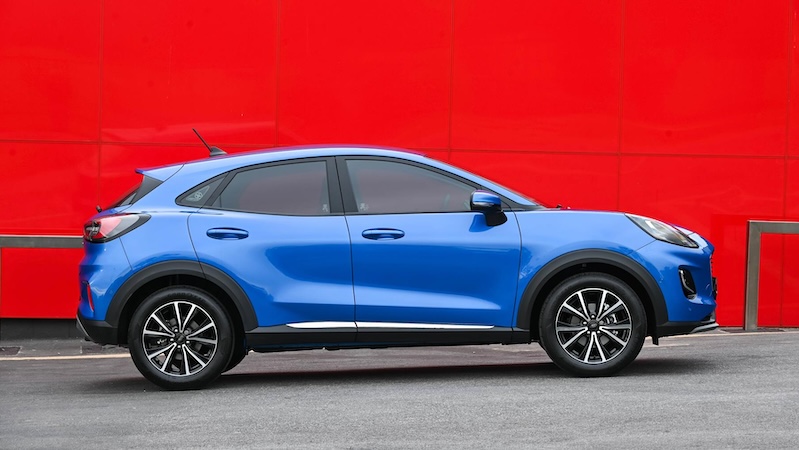
Driving experience
The Puma excels in urban environments, where its compact dimensions and keen steering make it easy to manoeuvre. The suspension is tuned to offer a comfortable ride, soaking up bumps with relative ease.
On the open road, the car remains composed, with minimal body roll and good grip, making it enjoyable to drive on longer journeys. The dual-clutch automatic transmission shifts smoothly, ensuring a refined driving experience.
My only criticism here is road noise. On tarred roads with a rougher surface, too much of it entered the cabin.
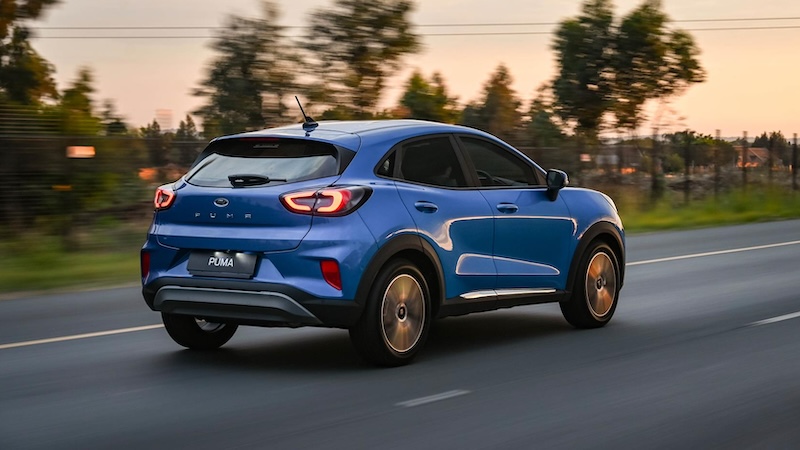
Safety and technology
The Puma Titanium comes with standard safety features like fog lights (front and rear), stability control, and six airbags.
To take it up another level, you’ll have to order the Driver Assistance Pack for R21 100. This gives you the following:
- Blind Spot Information System (BLIS)
- Intelligent Adaptive Cruise Control (with Traffic Jam on A/T)
- Traffic Sign Recognition
- Driver Impairment Monitor
- Front Parking Sensors
- Active Park Assist
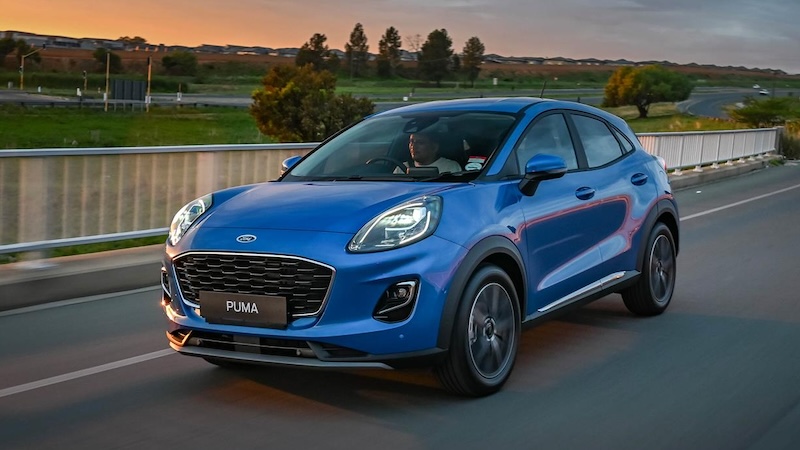
Verdict and rating
The Ford Puma 1.0T Titanium is an interesting option for South African motorists seeking a stylish, practical, and fun SUV. Its modern design, well-equipped interior, and playful character make it a strong contender in its segment.
The price tag of R571 440 is quite steep, though. I imagine customers who choose the Puma do so because they find the car very appealing, not because it’s the last word in value for money.
It’s a truly likeable car, but I would rather have a Ranger or Territory from the Ford stable. If I wanted something like the Puma, I’d choose the Opel Mokka 1.2T GS Line (R559 900) or Peugeot 2008 1.2T GT (R571 900). And from the Blue Oval, I’d have the Territory 1.8T Ambiente – (R576 000) or the Ranger 2.0 SiT double cab XL manual – R579 900.
The Box Cutter score for the Puma is 3 out of 5.
3.0 out of 5.0 stars

